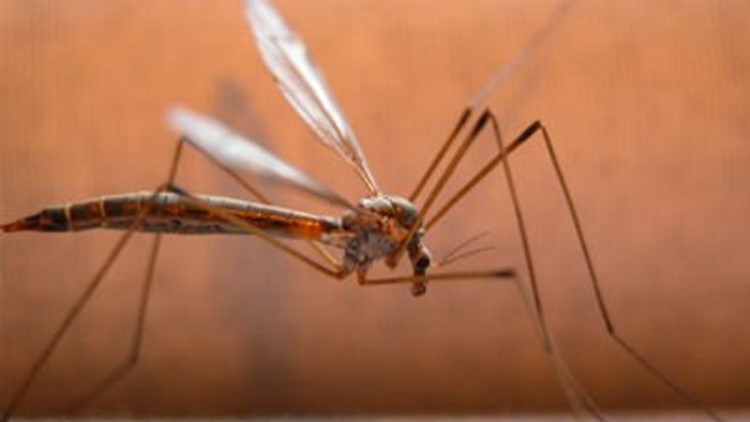A rain-soaked spring and flooded waterways might not be much fun for humans, but some bugs find the conditions ideal and they’re thriving.
The Illinois Department of Public Health confirmed they found the first mosquitoes testing positive for the West Nile virus May 21, 2013 in Hillside, Illinois in Cook County.
Scientists say no one really knows why insect repellents work, but if you’re concerned about toxins in some chemical sprays that contain DEET, there are some plants available that could help you in the fight for use of the outdoor areas of your home.
Plants and other strategies might help keep the creepy crawlies at bay.
Trap ’em
StormTeam 8 Chief Meteorologist James Zahara says dry active yeast and brown sugar can be mixed in a two-liter bottle to make your own mosquito trap. Get the detailed instructions – click here.
Change your ways
Chemistry.com says avoiding dark clothing might help, because the visual contrast between the clothes and your surroundings could make you more readily-visible to mosquitoes.
Emitting heat – whether from a warm person or a burning candle – gives off more carbon dioxide and might also make you more attractive to mosquitoes. Strategically-placed burning candles might also lure mosquitoes away from you. You release more carbon dioxide and lactic acid when you have been exercising, which also can attract mosquitoes. The scene and increased humidity of perspiration are also attractive to mosquitoes.
Conversely, some mosquitoes are also attracted to slightly cooler temps of your extremities which might explain why they sometimes seem to go after your arms and legs instead of your torso.
Stay away from fruity or floral fragrances often found in hair products, fabric softeners and perfumes.
Chemistry.com says many sunscreens also lower the effectiveness of insect repellents.
Plants
Citronella is a plant used often in insect-repelling candles and torch oils. It’s a perennial grass that grows 5 to 6 feet tall and can be grown in our area in a large pot so it can be rolled indoors for winter storage. Citronella works by emitting a strong odor that masks other scents that attract mosquitoes.
Horsemint, aka bee balm, also works by emitting a strong odor that makes it hard for mosquitoes to find you. It does well in the Midwest and eastern growing areas, and can be planted in pots to allow for winter storage.
Marigolds contain pyrethrum, which is used in many insect repellents, and give off a distinctive smell that mosquitoes don’t seem to like. Eartheasy.com says the upside is that marigolds repel other insects as well; the down side is that marigolds may also attract wasps. Pyrethrum daisies also contain the same active ingredient. Like mosquitoes, some people also find the aroma offensive in plants that contain pyrethrum.
Ageratum, aka floss flowers, secrete coumarin which has an odor mosquitoes don’t like. Coumarin is widely used in commercial mosquito repellents.
Basil also emits an aroma that helps to keep mosquitoes away. A HubPages blogger says lemon basil, cinnamon basil and Peruvian basil are even more effective.
The blog also says other mosquito-repellent herbs to try are clove plants, rosemary, lavender, lemon grass and garlic.
Catnip is, according to an Iowa State University study, 10 times more effective than DEET at repelling insects. It is easy to grow in pots and in the ground. Some people will apply crushed catnip leaves or catnip oil to their skin for more protection, but Eartheasy.com says those people should remember that cats will respond to the odor on skin the same way they would respond to the catnip plant.



